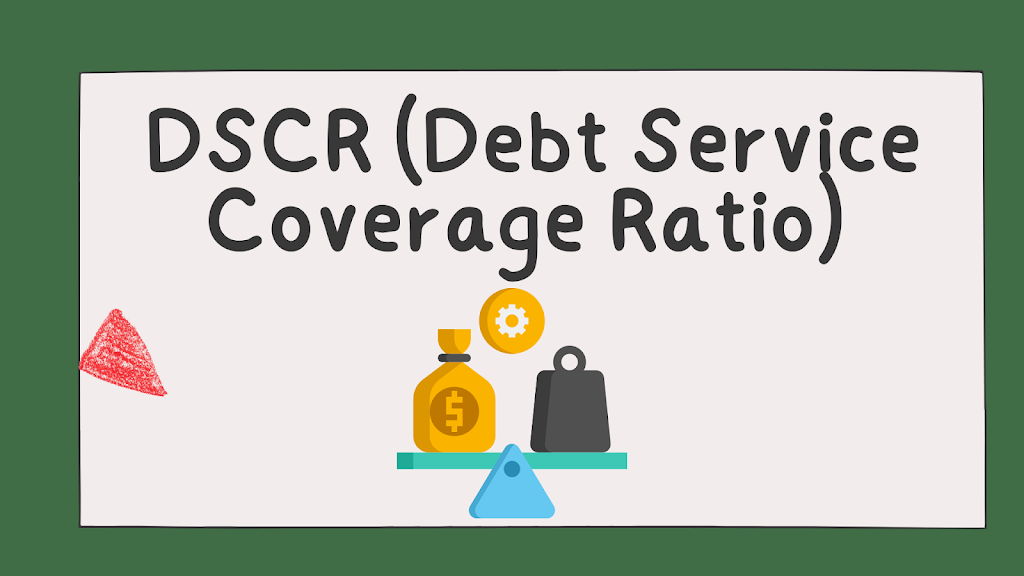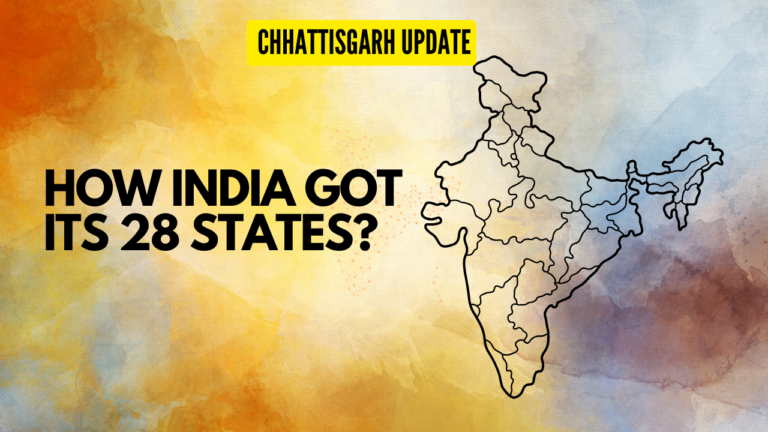
We are going to discuss another solvency ratio whose name is debt service coverage ratio. In short, we also call it DSCR. This artical is part of a series in which we’re discussing the solvency ratio. Now when we talk about DSCR, Then we want to know how comfortable a company is to pay total debt payments. Annual debt payment, in which both principal and interest portion both come. Now, whenever you go to take a loan in any bank.
 |
| DSCR (Debt Service Coverage Ratio) – Explained |
Then it studies whatever your cash flow is, and it takes out and sees your DSCR, how easily will you be able to pay your loan? Means will you be able to do payments easily or not? That’s why understanding the ratio becomes important. So how does its calculation is done? How its interpretation is done? We’ll understand that in this video. And in last I’ll also show a live demonstration that, how can we calculate DSCR os a company online? So watch this video till last. Let’s go straight to the blackboard. So as I said before, by Debt Service Coverage Ratio we know that if a company has sufficient cash flow to meet its debt obligations. Now, what are debt obligations? This is the annual principal plus interest payment. See, whenever you take a loan, you pay its EMI. Right! What are these principal and interest components? You’re basically paying 12 EMI of a year. Add those and you’ll get principal and interest of the year. Now, what is the formula of Debt Service Coverage Ratio? This is operating profit divided by debt service. Now, let’s come to what is operating profit? We’ve already talked about Debt Service. You have to add principal payment and interest payment, Whatever your annual payments come to be. Now see, whenever we talk about operating profit, there is the most confusion. We see 2-3 kinds of formulas. Let’s take a hypothetical example. I’ve taken out a portion of the income statement. Take out all the expenses from the revenue so you get EBITDA Earnings Before Interest, Taxes, Depreciation, and Amortization So this is 1 crore and 10 lakhs. You took out depreciation of 10 lakhs. Assume amortization to be zero. So you get the earnings before taxes. This is your operating profit. We talked practically about this. In my video of EBIT and EBITDA, I talked about this. You can watch that video. After this, you take out the interest component, then you get profit before tax. Then you take out taxes. I assumed approximately 30%. Then you get profit after tax, which we also call net profit. Now if our operating profit is EBIT, then we can do EBIT divided by debt service here. This formula is used in many places. Some banks also use it. This is a bit conservative formula. When banks want to be safer, they can use this kind of formula, and some analysts also use this formula, cause they basically want to play it safe. What do most banks do? They say that depreciation and amortization are non-cash expenses. The company has cash lying around, the company can use it for debt payment. What is depreciation? Ultimately it’s an adjustment. Whatever assets you’ve made you’re depreciating them, but actually, you have those 10 lakh Rs in the account. RIght! So you can do your debt service with that. That’s why EBITDA is used. This is a bit liberal formula. Generally, EBITDA is used when banks use it. But there is a catch in it too. In EBITDA you’ll see, I showed you these two formulas in interest coverage. It was good till there. Because we were talking about only interest payment there. There is a principal payment too in your debt service. The principal payment is non-tax-deductible I am going to write it here. Non-tax-deductible. What does Non-tax-deductible mean? There is no tax benefit on it. Here whatever interest payment you are doing, You’re getting direct tax benefit on that. You are removing the tax component from EBIT So whatever is the remaining profit before tax, you’re giving tax on that. Right! But the principal component is not tax-deductible. So ideally what do we need to do? We should not use this tax component. So when we are talking about operating profit, then there should be no tax component in it. So that’s why, if we talk about the ideal formula, then the ideal formula is, to take profit after tax in the first place, add interest component in it, add depreciation and amortization. So profit after tax plus interest plus depreciation plus amortization that’s the operating profit you’ll take in the numerator. Then it becomes the ideal formula. So in my opinion, ideally this formula should be used if we calculate DSCR. Let’s try to do a quick calculation. Profit after tax, interest, depreciation, amortization are here What do we have to calculate? We have to calculate how much is the debt service? We already saw the interest component in debt service. That is 20 lakhs. Other than that we need the principal component. Assume the principal component is 10 lakhs. If we add it here, we get a debt service of a total of 30 lakhs. Now if we calculate our DSCR here, then, first of all, we’ll write profit after tax. that’s 56 lakhs, we took it from here. What do we need now? We need the interest component. That is 20 lakhs, so I’ll write 20 lakhs here. Plus depreciation and amortization are totals of 10 lakhs, so I’ll write 10 lakhs here. Divided by, we’ll write debt service, which is 30 lakhs. So basically in the numerator, it is 86 lakhs, divided by 30 lakhs. If you do the calculation, then it comes to be 2.87. Now the question arises that this 2.87 is it a good figure or a bad figure? Let’s quickly understand it once. So see, when we talk about DSCR, if DSCR is less than, that means the company has The company is not generating enough operating profit to even cover the debt service. So basically the company which has less than 1 DSCR, it cannot service its debt obligations. Now, what should be the ideal DSCR? So any bank wants to see your DSCR between 1.5 to 2. This means different banks have different requirements. Some banks give loans at 1.5, while some require a minimum of 2. Also, it depends on the industry as well. If an industry has stable cash flows, for example, power industry or infrastructure, where long-term contracts happen, low DSCR can also be considered there. Otherwise, in normal industries, banks consider a minimum DSCR of 1.75, because they want to keep a cushion. So basically higher DSCR is good. And what does this basically indicate? Your solvency is stronger, you can easily pay your debts. Any company will pay its debt easily then there won’t be chances of getting bankrupt. That is the meaning of solvency. So basically the company won’t be insolvent. And what is the other benefit of having good DSCR? If DSCR is more than 2, that means the company can borrow money at competitive interest rates. it gets good interest rates. And it gets good loan terms. Assume if DSCR of a company is less than 1.5 and the minimum requirement of the bank is 1.5, then the bank will hesitate in giving you a loan. and even if it gives the loan, the interest rate will be high. So broadly this was the talk about the concept and calculation of DSCR. How should we calculate DSCR online? Let’s see that too. So pay attention to calculation online, because you don’t get principal payment directly from the website. So we’ll have to take out the annual report of a company. So quickly let’s see that too. So what did I do first? I took out the financials of Tata Steel from the money control website. You can take out the financials of any company by searching. Here on the left side, you get all the financial statements. What do we have to do? After going into the profit and loss statement, we get profit after tax, interest, and depreciation. So we came here. I am basically seeing the consolidated statement of march 2018 What do we need? Firstly we need profit after tax. Let’s see how much profit after tax we’re getting. You get the figure of profit after tax here. You get the interest component as well. This finance cost is the interest component. Then you also get depreciation and amortization from here. So we got all the figures of the numerator from here. Now the question arises, where will we get the interest and principal component? The interest we saw, we got it from here. Now, where will we get the principal component from? You get the principal component from the cash-flow statement. You get it from the cash flow from financing activities. So see, what happened here is that net cash used from financing activities, they have given a consolidated number here. You are not getting the principal component. Then I checked the second website also. I checked the India infoline website, Here also you don’t get the principal component separately. SO what will you have to do? You’ll have to basically see the annual report of the company you want to calculate DSCR of. So I got the annual report of Tata Steel from google. I went to the Tata Steel website and downloaded the pdf here. So here I came on the annual report of Tata Steel. and I’ve taken out the consolidated statement of profit and loss. And basically, on which page is this, you can check it. It’s on page number 282. So see, what are we getting here? I’ll write along with these figures. We have to see the profit after tax from continuing operations. We don’t need profit after tax from discontinued operations. The profit after tax is 17704 crores. What do we need after that? Finance cost. We got the finance cost from here, 5502 crores. After that, we need depreciation and amortization, which is 5962 crores So our numerator is complete from here. Now we’ll come down. We need cash flow activities. What will we get from cash flow? We’ll get the principal component from it. Interest component we’ve already seen. So see, the cash flow statement is here. First is operating activities and then investing activities. And then we come down to financing activities. In financing activities, we have to see the principal component. So principal component is basically repayment of borrowings. So this repayment of borrowings, short-term and long-term debt both are given in it. So basically total repayment of current debt and non-current debt is happening. We’re talking about the total principal payment here. In some companies’ cash flow statements, in the annual report, current, and non-current repayment, you can get separately. You have to add in that case. Here we’re getting combined so I’ll take that. So let’s do the calculation. We had seen the formula of DSCR. We needed profit after tax plus interest plus depreciation and amortization. Divided by we need debt service. What was out a profit after tax? 17704 crores. Plus what was our interest? 5502 crores. Plus depreciation and amortization we saw 5962 crores. We’ll divide all this What is our debt service? what is the principal? 19725. So this is 19725. Plus we have to add the interest component to it. How much is the interest component? 5502. So when you do the calculation, Then your DSCR comes out to be around 1.15 Now let’s see the interpretation of this 1.15 DSCR, this is actually very low. Even if banks think about giving loans again they’ll think that DSCR is very low. Don’t know if the company will be able to pay back the loan. So according to banks, Tata Steel may have problems in getting a loan. So you can analyze any company like this. So I hope, the concept of DSCR is clear to you, and the calculation would be understood too. That’s all for this video. If you enjoyed this video then do like and share. If you have any suggestions or you want to give feedback related to this video or this channel, then you can comment down below. I share finance and investment-related interesting topics daily on this channel. So if you still haven’t subscribed to this channel, then subscribe from below and press the bell icon on your phone, so you get a notification of my latest video. So let’s meet in the next video. Till then keep learning, keep earning, and be happy.



